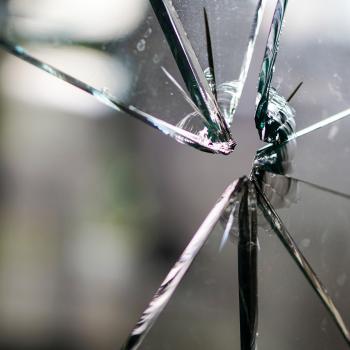Stewardship: What’s in your jar?
Monday night Atticus and I went to Spirit and Truth. We were expecting a bible study on James 1, and Adoration. When we got there, we realized a parish pre-Lent retreat was going on, with a speaker, Benediction and a reception (free brownies and wine!) Excitement! We settled into a pew in the enormous, unheated church.
The priest was in the middle of his talk, but it drew me in right away. He is a priest at Marian University here in Indy, and the theme of the talk was on practical spirituality. He was talking about stewardship, which is a great big buzzword in many parishes. How can we be good stewards? What is stewardship? I have to admit, I was afraid of hearing the same cliches I’ve heard before on this topic. I was pleasantly surprised.
Fr. Dan defined stewardship as “gratitude followed by responsibility”. He gave the example of receiving a family heirloom from an aging relative. You would of course, be grateful for the gift, sending a thank you card or phone call. And once the gift was in your possession, you wouldn’t stick it under the sink or use it as a door stop. You would put it in a place of prominence, and treat it with the respect and care it deserves, knowing that you had been trusted with the responsibility of keeping it safe for the next generation. That, he said, is stewardship.
Stewardship, he went on, requires a sharp mind. There are constant forces trying to divert our attention from God and from building his kingdom. Faulty ideas about the human person, about our purpose in life, and also things like t.v. advertisements, promising peace, fulfillment and a trim waistline for 19.99. Having a “sharp mind” as he called it, is a requirement, so that we might be good stewards of the gifts and talents that God has given us.
Then Fr. Dan told this story:
A college professor walked into a lecture hall with a large mayonnaise jar, like the kind from Sam’s Club. It was full of golf balls. The professor asked his class, “Is this jar full?” They replied, “Yes”. Then he produced a bag of small pebbles. He poured the pebbles into the jar with the golf balls. They filled in the spaces between the golf balls. The he asked the class, “Is the jar full?” and they replied, “yes”. Then he produced a bag of sand, and poured the sand into the jar. The sand filled in, even more, the spaces between the golf balls and pebbles, until it seemed, at last that the jar was full. Once more, he asked the class, “Is this jar full?” and they answered, “yes”. Then he produced two bottles of beer, opened them, and poured them into the jar, until it began to overflow. “Now,” he said, “now, the jar is full.”
The professor then went on to tell his class what these items represented. The golf balls, he said, represent the really important things in life: family, friends, relationships, prayer, God, children, etc. The pebbles represent those things which are still important, but if lost, would not be our utter undoing. He included our house, car, possessions, reputation, even our jobs. The sand represents the most dispensable of things in our lives; t.v., internet, shopping, etc.
The golf balls represent what he called the “first things” in our lives; those things which we would be lost without. He also said that they are called “first things” because they must go in our jar first. Golf balls are larger than pebbles and sand, and if the “first things” don’t go in first, there won’t be room for them at all.
And the beer? The beer represents the fact that no matter how busy you are, you’re never too busy for a couple of beers. 🙂
Then Fr. Dan looked out at the congregation and said, “In the jar of life, if we remember to put first things first, we’ll always remember that everything else is just sand.” It was definitely a wake-up call for me and my complacency. I spend too much time watching t.v. and shopping, and not enough time calling my friends and family and reaching out to those who are marginalized; making time for the things that actually matter.
So what’s in your jar?















